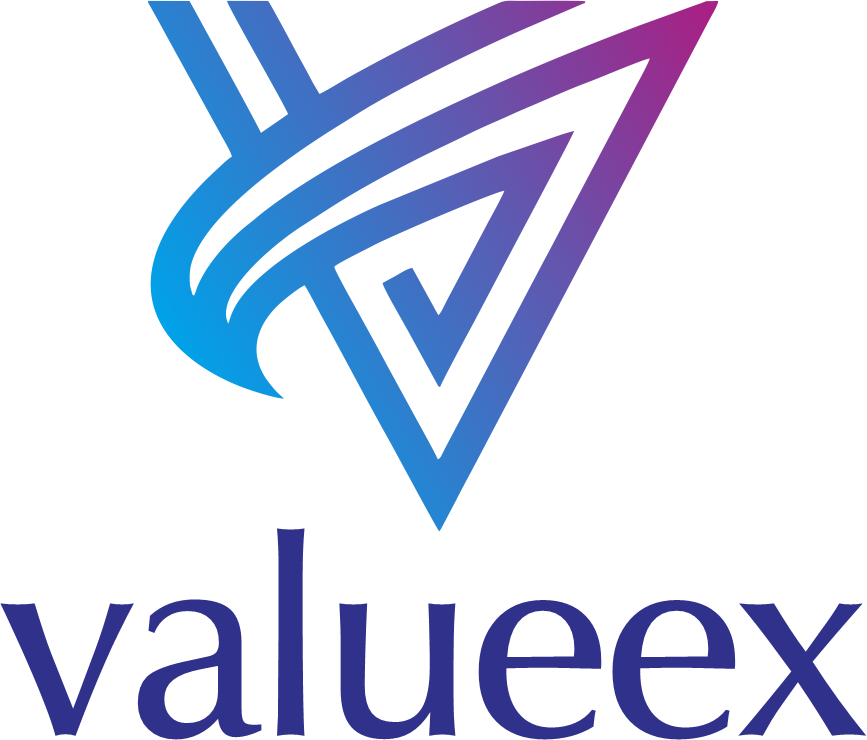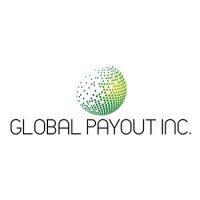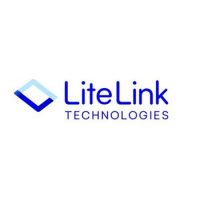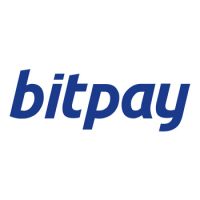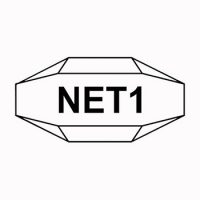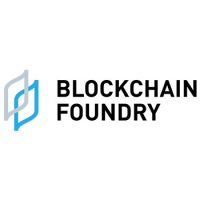Blockchain
Blocks & Headlines: Today in Blockchain – February 24, 2025 | Featuring Monad, Bybit, Gunzilla Games, Argo Blockchain, BGIN Blockchain

In the ever-shifting world of blockchain and cryptocurrency, staying abreast of the latest developments is not just a matter of professional interest—it’s a necessity. Today, on February 24, 2025, we bring you an op-ed-style daily briefing that delves into the innovations, controversies, and strategic moves that are shaping the future of decentralized technology. In this edition of Blocks & Headlines, we examine a suite of pivotal news stories: the unveiling of Monad, a high-speed EVM layer-1 blockchain poised to redefine scalability; the provocative discussions by Bybit’s CEO on the potential for an Ethereum blockchain rollback; insights from an in-depth interview with Gunzilla Games on the current capital rotations in blockchain gaming; Argo Blockchain PLC’s strategic announcement regarding its hosting initiatives; and Singapore’s BGIN Blockchain filing for a $50M US IPO to expand its crypto mining operations.
These stories capture a moment of transformation and turbulence in the blockchain ecosystem. Whether you’re a seasoned investor, a tech enthusiast, or a curious observer of Web3, DeFi, and NFT trends, this comprehensive analysis aims to provide clarity, context, and informed opinions on the news that matters most. As blockchain technology continues to evolve, its implications stretch far beyond digital currencies—impacting everything from financial services and gaming to regulatory frameworks and industrial investments. Read on as we explore these groundbreaking developments, their underlying trends, and the broader narrative that is driving change across the decentralized landscape.
I. Introduction: Unpacking the Day’s Key Blockchain Trends
Blockchain technology is no longer a niche interest confined to tech aficionados; it has exploded into the mainstream, powering innovations in finance, supply chain, gaming, and beyond. Today’s briefing highlights several key trends that are particularly noteworthy:
- High-Speed Layer-1 Innovations: The launch and preparation for new blockchain platforms such as Monad, which promises to deliver unprecedented transaction speeds and scalability.
- Controversial Governance Proposals: Heated debates over blockchain immutability and potential rollbacks, exemplified by discussions from industry leaders at Bybit.
- The Convergence of Gaming and Blockchain: As blockchain gaming matures, capital rotations and strategic shifts are reshaping the landscape, as revealed in recent interviews with industry players like Gunzilla Games.
- Strategic Corporate Moves: Major players such as Argo Blockchain PLC are expanding their service offerings to better host and support blockchain networks.
- Crypto Mining and IPO Activity: With Singapore’s BGIN Blockchain filing for a $50M US IPO to boost its mining operations, we see significant investment flows aiming to capitalize on crypto mining’s enduring appeal.
Each of these stories offers a window into a larger narrative. They speak to the ongoing evolution of blockchain from an experimental technology to a cornerstone of digital infrastructure, influencing everything from decentralized finance (DeFi) to non-fungible tokens (NFTs) and beyond. In our analysis, we draw on insights from trusted sources—Decrypt, Cointelegraph, StockTitan, 99Bitcoins, and more—to offer a detailed and opinion-driven perspective on these developments. Our aim is to not only summarize the news but also to contextualize it within the broader trends that are set to redefine the blockchain space in the coming years.
In today’s digital age, the ability to prepare for emerging trends like Monad’s high-speed transactions, understand the implications of potential Ethereum rollbacks, and follow strategic corporate moves is crucial. This briefing will explore these areas in detail, providing you with a comprehensive overview that is as analytical as it is engaging. As blockchain continues to disrupt traditional industries, the strategies adopted by key players will have far-reaching implications, influencing everything from investor sentiment to regulatory policies.
Let’s dive into the details, starting with a look at the promising yet challenging future outlined by the development of Monad—the high-speed EVM layer-1 blockchain that has the potential to set new benchmarks for scalability and efficiency in the blockchain ecosystem.
II. Preparing for Monad: The High-Speed EVM Layer-1 Blockchain
A. Unveiling Monad’s Vision for Scalability and Speed
According to Source: Decrypt, the blockchain community is buzzing with anticipation around Monad—a new high-speed EVM (Ethereum Virtual Machine) layer-1 blockchain designed to push the limits of transaction throughput and network efficiency. In an era when network congestion, high gas fees, and scalability challenges continue to plague existing blockchain platforms, Monad emerges as a potential game-changer.
Monad is designed with a focus on speed and efficiency, utilizing innovative consensus mechanisms and state-of-the-art technology to drastically reduce transaction times while ensuring robust security protocols. By leveraging an EVM-compatible architecture, Monad promises seamless integration with existing decentralized applications (dApps), making it an attractive option for developers and investors alike.
B. Technical Innovations and Strategic Implications
At its core, Monad’s architecture incorporates several groundbreaking features:
- Enhanced Consensus Mechanisms: Monad employs a next-generation consensus algorithm that optimizes transaction validation, reducing bottlenecks and ensuring high throughput. This innovation addresses one of the primary limitations of many current blockchains—namely, their inability to process a large volume of transactions quickly.
- EVM Compatibility: By being fully compatible with the Ethereum Virtual Machine, Monad facilitates the migration of existing dApps and smart contracts with minimal friction. This compatibility ensures that developers can leverage their existing codebases while enjoying the benefits of a faster network.
- Scalability Solutions: The design of Monad includes features that support horizontal scaling, allowing the network to expand its capacity as user demand grows. This forward-thinking approach is crucial in an industry where scalability is a perennial concern.
- Optimized Transaction Fees: Lower gas fees and faster confirmation times are among the touted benefits of Monad. This makes it particularly appealing for decentralized finance (DeFi) applications, where cost efficiency can significantly affect user adoption.
C. Broader Implications for the Blockchain Ecosystem
The launch of Monad could signal a pivotal moment in blockchain history. With its promise of high-speed transactions and lower fees, Monad is poised to disrupt the status quo, potentially drawing developers and users away from congested networks. This shift could catalyze a wave of innovation across the blockchain industry, spurring new use cases and driving broader adoption of decentralized technologies.
From an op-ed perspective, Monad’s emergence represents both an opportunity and a challenge. While its technical capabilities are impressive, its long-term success will depend on a host of factors, including community adoption, security assurances, and the ability to maintain decentralization in the face of rapid growth. As we prepare for a new era of blockchain innovation, stakeholders must carefully balance the promise of speed and efficiency with the need for robust, secure, and decentralized systems.
D. Preparing for the Transition: What Stakeholders Need to Know
For investors, developers, and industry watchers, preparing for Monad means staying informed about its roadmap, engaging with community forums, and monitoring early deployments. As blockchain networks evolve, the transition to faster, more efficient platforms like Monad could redefine market dynamics and shift competitive advantages. In this context, the ability to adapt quickly and leverage new technologies will be a key determinant of success in the rapidly evolving blockchain ecosystem.
In conclusion, Monad represents a bold step forward in the quest for scalability and speed. As it prepares to enter the market, its development and adoption will be critical to watch—not only for its immediate technical benefits but also for its potential to reshape the broader blockchain landscape. With its promise of enhanced performance and lower costs, Monad is poised to become a cornerstone in the next generation of blockchain infrastructure.
III. Bybit CEO’s Provocative Discussion on an Ethereum Blockchain Rollback
A. Contemplating a Rollback: A Debate on Immutable Ledgers
In a surprising turn of events, Source: Cointelegraph reports that the CEO of Bybit, a leading cryptocurrency exchange, has raised the possibility of a rollback on the Ethereum blockchain—a notion that challenges one of the core principles of blockchain technology: immutability. This provocative discussion has ignited a firestorm of debate within the community, with implications that extend far beyond technical considerations.
B. Understanding the Concept of Blockchain Rollbacks
Blockchain rollbacks refer to the process of reversing transactions or reordering blocks after they have been confirmed on the chain. Such an action would effectively alter the historical record, undermining the trust and security that blockchain’s immutability provides. Proponents argue that in extreme circumstances—such as major security breaches or catastrophic errors—a rollback might be necessary to protect users and preserve the integrity of the network. However, critics warn that tampering with the immutable ledger could set a dangerous precedent, eroding confidence in decentralized systems.
C. Bybit CEO’s Perspective and Industry Reactions
The Bybit CEO’s comments have resonated throughout the blockchain community, sparking discussions among developers, investors, and regulators alike. On one hand, the idea of a rollback may be seen as a pragmatic solution in extraordinary circumstances, offering a safety valve to correct errors or mitigate damages from large-scale attacks. On the other hand, it raises fundamental questions about decentralization and trust. If blockchain records can be altered at the discretion of a centralized authority, the very foundation of the technology is called into question.
From an op-ed standpoint, the debate over a potential Ethereum rollback touches on the tension between innovation and principle. The blockchain industry has long prided itself on the concept of immutability—a guarantee that once data is recorded, it cannot be changed. This assurance is a key driver of trust, particularly in decentralized finance (DeFi) and NFT markets, where users rely on transparent, unalterable records.
D. Implications for Ethereum and the Broader Ecosystem
Should a rollback ever become necessary or even be seriously considered, the ramifications for Ethereum—and by extension, the entire blockchain ecosystem—could be profound. A rollback could:
- Undermine User Confidence: Investors and developers might lose faith in the security of blockchain platforms if they perceive that the underlying data can be manipulated.
- Trigger Regulatory Scrutiny: Such a dramatic shift in policy could invite closer regulatory examination, potentially leading to stricter oversight and intervention in the cryptocurrency space.
- Alter Competitive Dynamics: Competitors might seize the opportunity to promote alternative platforms that emphasize immutability and decentralization, potentially fragmenting the market.
In our view, the Bybit CEO’s remarks serve as a wake-up call for the blockchain community. They remind us that while the technology is powerful, it is not infallible. As blockchain networks become more integral to financial and social systems, the need for robust contingency plans—and a willingness to confront uncomfortable questions about immutability—will only grow. The challenge for industry leaders will be to balance the need for security and resilience with the foundational principles that have driven blockchain’s success.
E. Navigating the Debate: Key Considerations for Stakeholders
For stakeholders in the Ethereum ecosystem, the potential for a rollback raises several critical considerations:
- Risk Management: How should protocols be designed to mitigate catastrophic failures without compromising core values?
- Governance Models: What role should community consensus and decentralized governance play in decisions that could alter the historical record?
- Transparency and Communication: How can leaders ensure that any extraordinary measures are clearly communicated and understood by the community?
As the debate continues, it will be essential for the Ethereum community to engage in open, honest discussions about these issues. Only by confronting the challenges head-on can the industry hope to evolve in a way that maintains trust, security, and the innovative spirit of decentralized technology.
IV. Capital Rotation in Blockchain Gaming: An Interview with Gunzilla Games
A. The Intersection of Blockchain and Gaming
Blockchain gaming has emerged as one of the most exciting and rapidly evolving sectors within the broader cryptocurrency space. According to Source: Cointelegraph, an in-depth interview with Gunzilla Games—a prominent player in blockchain gaming—offers a revealing look into the capital rotations and strategic shifts currently underway in this dynamic field. As gaming and blockchain converge, the industry is witnessing a reallocation of resources, new business models, and innovative gameplay mechanics that leverage the unique properties of decentralized technologies.
B. Insights from Gunzilla Games: A Changing Landscape
Gunzilla Games, known for its pioneering work in integrating blockchain technology with immersive gaming experiences, recently discussed how capital flows are being redirected within the industry. The company has observed a shift away from traditional funding models toward more decentralized, community-driven approaches. This rotation of capital is driven by several factors:
- Increased Interest in NFTs and Digital Assets: The rise of non-fungible tokens (NFTs) has revolutionized in-game economies, providing gamers with true ownership of digital assets. This trend is prompting investors to focus on projects that offer tangible value and real-world utility.
- Growth in Play-to-Earn Models: As players increasingly seek to monetize their gaming experiences, play-to-earn models are becoming a major draw. These models not only reward players for their time and effort but also create new opportunities for revenue generation across the ecosystem.
- Innovation in Game Design: Blockchain gaming projects are experimenting with novel gameplay mechanics that integrate elements of decentralized finance (DeFi) and Web3. This innovation is driving demand for funding and strategic partnerships that can support long-term growth and scalability.
C. Strategic Shifts and Industry Implications
Gunzilla Games’ interview sheds light on broader strategic shifts taking place within the blockchain gaming sector. Key insights include:
- Capital Reallocation: Investors are increasingly favoring projects that offer innovative tokenomics and clear paths to monetization. This reallocation of capital is reshaping the competitive landscape, with well-funded projects poised to dominate the market.
- Focus on User Experience: Despite the technical innovations, the ultimate success of blockchain gaming hinges on delivering a compelling user experience. Projects that can balance cutting-edge blockchain features with engaging gameplay are likely to capture a larger share of the market.
- Community-Driven Growth: Decentralized governance and community engagement are emerging as critical factors in the long-term success of blockchain gaming platforms. By involving players in decision-making processes, companies can build stronger, more resilient ecosystems that are less susceptible to market volatility.
D. Commentary on the Future of Blockchain Gaming
From an op-ed perspective, the capital rotations observed in blockchain gaming reflect a broader maturation of the industry. As gaming companies like Gunzilla Games innovate and adapt, they are not only transforming how games are developed and monetized but also redefining the role of players as active participants in the ecosystem. This shift has profound implications for the future of digital entertainment, suggesting that the next wave of gaming will be as much about decentralized finance and digital ownership as it is about immersive storytelling and interactive experiences.
For investors and developers alike, the evolving landscape of blockchain gaming presents both significant opportunities and notable risks. The ability to navigate this complex environment will depend on a nuanced understanding of emerging trends, strategic partnerships, and the evolving expectations of a global user base. As blockchain gaming continues to grow, the industry will likely see a proliferation of new business models, innovative gameplay mechanics, and a deeper integration of digital assets into everyday entertainment.
V. Argo Blockchain PLC’s Strategic Move: Announcing New Hosting Capabilities
A. Argo Blockchain’s Vision for Enhanced Infrastructure
In another major development, Source: StockTitan reports that Argo Blockchain PLC, a well-known name in the crypto mining and blockchain infrastructure space, has announced its expansion into hosting services. This move marks a strategic pivot as the company seeks to leverage its extensive experience and technical expertise to provide robust, scalable hosting solutions for blockchain networks.
B. Understanding the New Hosting Initiative
Argo Blockchain’s hosting initiative is designed to support a variety of blockchain projects by offering reliable, secure, and scalable infrastructure solutions. Key components of this initiative include:
- Enhanced Data Center Capabilities: By expanding its data center operations, Argo Blockchain aims to provide the computing power necessary to support high-performance blockchain applications. This expansion is critical for handling the increasing data loads generated by decentralized networks.
- Improved Security Protocols: With cyber threats continually on the rise, robust security measures are paramount. Argo Blockchain’s hosting services are built with state-of-the-art security protocols to protect sensitive data and ensure uninterrupted service.
- Scalability and Flexibility: Recognizing that blockchain networks can experience rapid growth, Argo Blockchain’s hosting solutions are designed to scale seamlessly. This flexibility allows projects to expand their operations without compromising performance or security.
- Interoperability: The hosting platform is engineered to be compatible with a range of blockchain protocols, making it an attractive option for projects looking to integrate multiple systems or migrate from legacy infrastructures.
C. Strategic Rationale and Industry Implications
The decision by Argo Blockchain PLC to enter the hosting market is emblematic of a broader trend toward consolidation and vertical integration within the blockchain ecosystem. By expanding its service offerings, Argo Blockchain is not only diversifying its revenue streams but also positioning itself as a key infrastructure provider in an increasingly crowded market. This strategic move has several important implications:
- Strengthening the Ecosystem: Reliable hosting services are a critical component of any robust blockchain infrastructure. Argo Blockchain’s initiative could enhance the stability and performance of blockchain networks, thereby driving greater adoption.
- Competitive Differentiation: In a market where many companies focus solely on mining or transactional services, offering comprehensive hosting solutions can provide a competitive edge.
- Enhanced Investor Confidence: The expansion into hosting underscores Argo Blockchain’s commitment to long-term growth and innovation, potentially attracting new investors who are looking for companies with diversified business models.
D. Future Prospects and Strategic Commentary
From an op-ed standpoint, Argo Blockchain PLC’s move into hosting is a clear signal that the blockchain industry is evolving beyond its early experimental phase. As blockchain networks become more complex and data-intensive, the need for reliable infrastructure solutions will only grow. Companies that can offer scalable, secure, and interoperable hosting services are likely to play a pivotal role in the next wave of blockchain innovation.
Investors and industry stakeholders should view this development as a positive indicator of the maturing market dynamics. As traditional IT companies and specialized blockchain firms converge, the resulting synergies could drive unprecedented levels of efficiency, security, and innovation in the decentralized space.
VI. Singapore’s BGIN Blockchain Files for a $50M US IPO: Expanding Crypto Mining Operations
A. A Bold Financial Move in Crypto Mining
In a significant move that underscores the ongoing evolution of the crypto mining sector, Source: 99Bitcoins reveals that Singapore-based BGIN Blockchain has filed for a $50M US IPO. This strategic decision aims to finance the expansion of its crypto mining operations—a sector that remains critical to the overall blockchain ecosystem despite the rise of alternative consensus mechanisms.
B. The Rationale Behind the IPO
BGIN Blockchain’s decision to go public in the United States represents a bold attempt to tap into new pools of capital and enhance its operational capacity. Several key factors are driving this move:
- Expansion of Mining Infrastructure: The funds raised through the IPO will be used to scale up mining operations, including the acquisition of new mining rigs, the expansion of data center facilities, and the enhancement of energy efficiency measures.
- Strategic Positioning: By listing in the US, BGIN Blockchain aims to increase its visibility and credibility in a market that is increasingly focused on sustainability, innovation, and regulatory compliance in crypto mining.
- Market Demand: Despite fluctuations in cryptocurrency prices, demand for crypto mining remains strong, driven by the need for secure, decentralized transaction validation. The IPO is designed to capitalize on this enduring demand by enabling BGIN Blockchain to expand its operations and capture a larger share of the market.
- Technological Innovation: The funds are also expected to support research and development initiatives aimed at improving mining efficiency, reducing environmental impact, and integrating new technologies into existing mining frameworks.
C. Broader Implications for the Crypto Mining Sector
The IPO filing by BGIN Blockchain is significant for several reasons:
- Increased Institutional Participation: A successful US IPO could pave the way for greater institutional investment in the crypto mining sector, lending credibility and stability to an industry that has often been viewed with skepticism.
- Expansion of Global Operations: As crypto mining becomes more competitive globally, companies that secure substantial funding will be better positioned to expand their operations and maintain a technological edge.
- Regulatory and Environmental Considerations: With heightened scrutiny on the environmental impact of crypto mining, BGIN Blockchain’s expansion plans may also incorporate sustainable practices, potentially setting new industry standards for energy efficiency and regulatory compliance.
D. Strategic Outlook and Investment Implications
From an op-ed perspective, BGIN Blockchain’s IPO filing represents both a challenge and an opportunity. On one hand, the crypto mining industry faces significant headwinds, including regulatory pressures, environmental concerns, and market volatility. On the other hand, companies that successfully navigate these challenges can emerge as industry leaders, driving innovation and capturing significant market share. The move by BGIN Blockchain signals confidence in the long-term viability of crypto mining, suggesting that even in a rapidly evolving digital asset landscape, foundational elements such as mining continue to play a critical role.
For investors, this development is a reminder that the blockchain ecosystem is multifaceted. While decentralized finance, NFTs, and Web3 applications capture much of the headlines, core infrastructure elements like crypto mining remain vital to the system’s overall health and security.
VII. Synthesis: Connecting the Dots in Today’s Blockchain Landscape
A. Convergence of Innovation and Infrastructure
The news stories covered in today’s briefing illustrate a blockchain ecosystem in flux—one where innovation and infrastructure development are converging to create a more robust, scalable, and secure digital environment. The introduction of Monad, with its promise of high-speed transactions, signals a new era for layer-1 blockchains. At the same time, discussions about potential Ethereum rollbacks highlight the ongoing tension between technological progress and the foundational principles of decentralization.
Similarly, the dynamic shifts in blockchain gaming and the strategic moves by Argo Blockchain and BGIN Blockchain underscore the importance of both creative innovation and solid infrastructure. Together, these developments suggest that the future of blockchain will be defined by a delicate balance between cutting-edge technologies and the reliable, scalable foundations that support them.
B. Strategic Investments and Market Maturation
The aggressive capital rotations and strategic funding moves highlighted in today’s briefing are a clear sign that the blockchain and cryptocurrency industries are maturing. Investors are increasingly looking for projects that not only push the boundaries of technology but also offer sound business models and sustainable growth prospects. The move by BGIN Blockchain to file for a US IPO and Argo Blockchain’s expansion into hosting services are prime examples of this trend. These actions signal a shift from speculative investments to long-term strategic planning—a shift that could stabilize markets and drive broader adoption of decentralized technologies.
C. The Role of Governance and Ethical Considerations
As the blockchain space evolves, debates about governance—exemplified by the discussion on potential Ethereum rollbacks—remain at the forefront. The tension between the need for rapid innovation and the desire to maintain immutable, trustless systems is a recurring theme. Stakeholders must navigate these complex issues carefully, ensuring that technological advancements do not come at the expense of the fundamental principles that underpin the blockchain ethos.
D. Future Directions: Trends and Opportunities
Looking ahead, several key trends are likely to shape the future of the blockchain ecosystem:
- Scalability and Speed: With projects like Monad leading the charge, the quest for scalable, high-speed blockchain solutions will continue to drive innovation.
- Decentralized Finance and Web3: As the backbone of many modern applications, the integration of DeFi and Web3 technologies will spur further advancements in how we interact with digital assets.
- Integration of AI and Blockchain: Future developments may see deeper integration of artificial intelligence with blockchain technology, enhancing everything from security protocols to data analytics.
- Sustainable Mining Practices: With environmental concerns increasingly influencing public policy, companies in the crypto mining sector will need to adopt more sustainable practices to ensure long-term viability.
- Evolving Governance Models: The ongoing debate over blockchain rollbacks and decentralized governance will likely lead to new models of decision-making that better balance innovation with trust.
In synthesizing these developments, it is evident that today’s blockchain landscape is marked by both opportunity and complexity. The interplay between technical innovation, strategic investment, and governance challenges is shaping a future that is as dynamic as it is unpredictable. Stakeholders across the spectrum—from developers and investors to regulators and end users—must remain agile and informed to navigate this brave new world.
VIII. Conclusion: Major Takeaways from Today’s Blockchain Briefing
As we wrap up today’s edition of Blocks & Headlines, several key insights emerge from the news and analysis presented:
- High-Speed Innovation with Monad: The development of Monad as a high-speed EVM layer-1 blockchain could redefine scalability and transaction efficiency across the industry. Its promise of low fees and rapid confirmation times positions it as a potential leader in next-generation blockchain technology.
- Debate Over Blockchain Immutability: The provocative discussion by Bybit’s CEO regarding an Ethereum rollback has sparked critical debates on the principles of immutability and decentralized governance. This conversation serves as a reminder that the balance between security, trust, and innovation remains a central challenge in the blockchain space.
- Evolving Capital Flows in Blockchain Gaming: The insights shared by Gunzilla Games highlight a transformative period in blockchain gaming, where capital is being reallocated to projects that offer innovative NFT integrations, play-to-earn models, and community-driven growth. This evolution is set to redefine how digital assets are valued and utilized in the gaming ecosystem.
- Infrastructure Expansion by Argo Blockchain: Argo Blockchain PLC’s strategic expansion into hosting services underscores the importance of robust infrastructure in supporting a growing number of blockchain networks. This move is expected to enhance network stability and drive broader adoption of decentralized applications.
- Strategic Financial Moves in Crypto Mining: Singapore’s BGIN Blockchain filing for a $50M US IPO illustrates that even as the industry evolves, core sectors such as crypto mining remain vital. This move not only aims to expand operations but also highlights the ongoing need for sustainable and scalable mining practices.
Taken together, these developments paint a picture of an industry that is both vibrant and volatile, characterized by rapid innovation, strategic consolidation, and ongoing debates about governance and trust. For blockchain enthusiasts, investors, and professionals, today’s briefing offers valuable insights into the trends that will shape the future of decentralized technology.
As we look forward, the blockchain and cryptocurrency sectors will undoubtedly face new challenges and opportunities. The ability to innovate rapidly, secure reliable funding, and navigate complex governance issues will be critical to sustaining growth and fostering long-term success. In this context, staying informed and adaptable is not just an advantage—it is a necessity.
Thank you for joining us for today’s in-depth exploration of blockchain and crypto news. We remain committed to providing timely, thoughtful, and actionable analysis as the landscape continues to evolve. Stay tuned for tomorrow’s edition of Blocks & Headlines, where we will continue to monitor, dissect, and discuss the breakthroughs, challenges, and opportunities that define the ever-changing world of blockchain.
The post Blocks & Headlines: Today in Blockchain – February 24, 2025 | Featuring Monad, Bybit, Gunzilla Games, Argo Blockchain, BGIN Blockchain appeared first on News, Events, Advertising Options.
Blockchain
Blocks & Headlines: Today in Blockchain – May 6, 2025 | Arkham, DMG Blockchain, Solana, Prologis

The Blockchain Renaissance – AI, Infrastructure, and Eastern Europe’s Ascent
As we navigate through the intricate tapestry of blockchain and cryptocurrency, May 6, 2025, stands out as a day marked by significant strides in technology, infrastructure, and regional innovation. From the fusion of artificial intelligence with blockchain analytics to the strategic expansion of data centers, the landscape is evolving at an unprecedented pace. Eastern Europe, particularly Romania, is emerging as a formidable player in the blockchain arena, leveraging platforms like Solana to drive innovation. Simultaneously, the integration of blockchain into warehouse operations signifies the technology’s permeation into traditional industries.
Arkham and Blockchair: Redefining On-Chain Transparency
In the realm of blockchain analytics, Arkham Intelligence and Blockchair are pioneering a new era of on-chain visibility. Arkham Intelligence, founded by Miguel Morel and backed by notable investors such as Sam Altman and Tim Draper, utilizes AI to deanonymize blockchain addresses, providing a clearer view of cryptocurrency flows. This approach, while enhancing transparency, raises questions about privacy and the balance between openness and confidentiality in the decentralized world.
Blockchair complements this by offering a comprehensive blockchain search and analytics engine, enabling users to explore transactions across multiple blockchains. Their tools facilitate a deeper understanding of blockchain data, empowering users to make informed decisions.
Source: Bitcoin News
DMG Blockchain Solutions: Strategic Pivot Towards AI Infrastructure
DMG Blockchain Solutions Inc. has reported its preliminary operational results for April 2025, highlighting a strategic shift towards artificial intelligence infrastructure. The company mined 30 BTC during the month, a slight decrease from March, attributed to increased network difficulty and a shorter month. Notably, DMG increased its realized hashrate to 1.93 EH/s, supported by the deployment of additional Bitmain S21+ Hydro miners.
In a significant move, DMG liquidated a portion of its Bitcoin holdings to fund the acquisition of 2 megawatts of prefabricated AI data center infrastructure. This investment marks a demonstrative shift towards utilizing returns from Bitcoin mining to fund AI capital expenditures, aiming to secure off-take agreements with high-value government and enterprise users seeking sovereign AI solutions in Canada.
Source: GlobeNewswire
Prologis: Integrating Blockchain into Warehouse Operations
Prologis, a global leader in logistics real estate, is exploring the integration of blockchain technology into warehouse operations. By leveraging blockchain’s immutable ledger, Prologis aims to enhance inventory management, transportation tracking, and logistics. The technology allows for a permanent record of every transaction, accessible to all network participants, thereby improving transparency and efficiency across the supply chain.
This integration enables manufacturers to better manage product origins, traceability, potential recalls, and perishable goods. With real-time visibility into consumer-level demand, manufacturers can forecast demand accurately, optimizing revenue and profitability while reducing the risk of lost sales.
Source: Prologis
Romania’s Embrace of Solana: Accelerating Blockchain Innovation in Eastern Europe
Romania is positioning itself as a hub for blockchain innovation in Eastern Europe, with a particular focus on the Solana blockchain. The country’s tech-savvy population and supportive regulatory environment have attracted developers and entrepreneurs to build decentralized applications (dApps) on Solana’s high-performance platform.
This strategic embrace of blockchain technology is fostering economic growth and technological advancement in the region. By leveraging Solana’s scalability and low transaction costs, Romanian startups are developing solutions in finance, supply chain, and digital identity, contributing to the broader Web3 ecosystem.
Source: Romania Insider
Blockchain’s Role in Shaping Web3: Insights from NASSCOM
The National Association of Software and Service Companies (NASSCOM) has highlighted the pivotal role of blockchain technology in the evolution of Web3. Blockchain’s decentralized and immutable nature provides the foundation for a more secure and user-centric internet, enabling peer-to-peer interactions without intermediaries.
By facilitating trustless transactions and data ownership, blockchain empowers users to control their digital identities and assets. This paradigm shift is driving the development of decentralized applications, decentralized finance (DeFi), and non-fungible tokens (NFTs), reshaping the digital landscape towards a more equitable and transparent ecosystem.
Source: NASSCOM
Conclusion: Navigating the Blockchain Frontier
The developments on May 6, 2025, underscore the dynamic nature of the blockchain and cryptocurrency landscape. From enhancing transparency through AI-powered analytics to integrating blockchain into traditional industries and fostering regional innovation, the technology continues to evolve and permeate various sectors. As we move forward, the convergence of blockchain with emerging technologies like AI and the proactive adoption by nations like Romania signal a promising trajectory towards a decentralized and inclusive digital future.
The post Blocks & Headlines: Today in Blockchain – May 6, 2025 | Arkham, DMG Blockchain, Solana, Prologis appeared first on News, Events, Advertising Options.
Blockchain
Blocks & Headlines: Today in Blockchain – May 5, 2025 – Arkham, Blockchair, Worldcoin, Maldives

In an ecosystem defined by perpetual innovation and high-stakes regulatory scrutiny, the blockchain and cryptocurrency industry never pauses. Today’s briefing—“Blocks & Headlines: Today in Blockchain – May 5, 2025 – Arkham, Blockchair, Worldcoin, Maldives”—dives into five compelling stories shaping the narrative: a transformative $9 billion blockchain hub in the Maldives; Sam Altman’s Worldcoin orbs arriving stateside; AI‑enhanced onchain visibility via Arkham and Blockchair; the Blockchain Association’s plea for flexible SEC oversight; and Telegram’s blockchain‑inspired encryption for massive group calls.
Together, these developments spotlight five interlocking themes: diversification of traditionally tourism‑dependent economies, identity and trust models in Web3, the fusion of AI with onchain data, the evolving policy landscape, and privacy‑centric encryption. Across these stories, recurring SEO keywords—blockchain, cryptocurrency, Web3, DeFi, NFTs, tokenization, decentralized identity, onchain analytics, regulation, and privacy—underscore the connective tissue binding today’s headlines.
1. $9 Billion Blockchain Hub on Track to Transform Maldives
Source: U.Today
The Maldives, an archipelagic nation whose economy is heavily tethered to tourism (approximately 30 % of GDP) and fishing (around 10 %), is confronting mounting fiscal challenges: public debt has breached national GDP levels (circa $7 billion), and deficits threaten sovereign stability. In a strategic pivot, Maldivian authorities signed a joint venture with MBS Global Investments—a $14 billion UAE family office—earmarking an $8.8 billion investment in a cutting‑edge blockchain hub. This initiative aims to catalyze a 200 % GDP surge within four years, spawning thousands of jobs and potentially averting sovereign default.
On the surface, relocating blockchain infrastructure to paradise may seem incongruous. Yet by repurposing the country’s geographically dispersed islands into a decentralized Web3 nexus, the Maldives could host data centers powered by renewable oceanic energy, attract DeFi startups, and incubate NFT marketplaces catering to affluent tourists. This diversification blueprint underscores a broader trend: small economies leveraging blockchain to transcend traditional growth constraints. However, critical questions loom—regulatory clarity, environmental footprint, and cybersecurity resilience will determine whether this hub becomes a scalable model or a stranded asset.
Implication: If executed judiciously, the Maldives’ blockchain hub could set a precedent for emerging economies seeking to harness decentralized infrastructure. But success hinges on transparent governance, sustainable energy sourcing, and robust legal frameworks.
2. Altman’s Eyeball‑Scanning Worldcoin Orbs Land in the U.S.
Source: The Register
On May 1, six Worldcoin “Orb” retail locations opened across the United States—Austin, Atlanta, Los Angeles, Miami, Nashville, and San Francisco—offering biometric iris scans in exchange for WLD crypto tokens. Co‑founded by Sam Altman (OpenAI CEO), Alex Blania, and Max Novendstern, Tools for Humanity champions World ID, a blockchain‑based proof‑of‑personhood system designed to authenticate humans versus bots or AI‑generated avatars. Users who scan their irises receive roughly $16 in WLD, enabling them to later verify identity on participating platforms.
While touted as a breakthrough in decentralized identity, the initiative has incited privacy regulators worldwide: South Korea fined the project over $800,000, Hong Kong prohibited operations, and legal probes are active in Germany, Kenya, and Spain. Yet Worldcoin maintains that biometric data is encrypted on-device and purged post‑scan, and with 26 million users globally (12 million scanned), the network seeks to deploy 7,500 Orbs in the U.S. by year’s end.
Opinion: Worldcoin’s retail push exemplifies the friction between innovative identity solutions and privacy norms. The on‑chain distribution of WLD tokens may democratize crypto access, but it also risks normalizing biometric collection without exhaustive regulatory guardrails. The debate between security and civil liberties intensifies as Web3 projects blur lines between voluntary onboarding and pervasive surveillance.
3. AI and Blockchain Explorers ‘Arkham’ & ‘Blockchair’ Reshape Onchain Visibility
Source: Bitcoin News
Blockchain explorers have evolved from static transaction trackers to dynamic investigative platforms, especially with generative AI integration. Two frontrunners—Arkham Intelligence and Blockchair—are pioneering tools to render cryptographic ledgers comprehensible. Arkham’s AI correlates onchain flows with off‑chain entities, enabling analysts to dissect a Binance transaction involving 0.3065 BNB routed through WBNB and Pancakeswap in seconds. Blockchair’s AI assistant, Cuborg, fields natural‑language queries (e.g., “Which Bitcoin address dormant since 2017 just moved funds at block 895,197?”), surfacing actionable intelligence with remarkable speed.
The convergence of machine learning and onchain analytics promises unprecedented transparency for DeFi protocols, NFT markets, and compliance teams. Yet this visibility shift also rekindles the age‑old privacy dilemma: as attribution sharpens, users may flee to privacy coins (e.g., Monero, Zcash) or sophisticated mixers, fracturing onchain provenance. Thus, the community must strike a balance—leveraging AI for due diligence without undermining pseudonymity, a bedrock of decentralization.
Takeaway: Enhanced onchain visibility emboldens regulators and institutional custodians to adopt crypto, but it simultaneously pressures privacy advocates to innovate. The trajectory of DeFi scalability and AML compliance will pivot on how explorers calibrate the transparency‑privacy spectrum.
4. Blockchain Association Urges SEC to Adopt Flexible Crypto Regulation
Source: The Block Binance
On May 2, the Blockchain Association—representing heavyweights such as Coinbase, Ripple, and Uniswap Labs—submitted formal comments urging the U.S. Securities and Exchange Commission (SEC) to embrace an “incremental, flexible approach” under new Chair Paul S. Atkins. The association argued that equity‑style rule frameworks ill‑fit blockchain’s decentralized architecture, and that overly restrictive policies risk ceding global leadership in Web3 innovation. Key recommendations included:
-
Modernizing “best execution” by prioritizing diligence over prescriptive equity norms.
-
Leveraging public exchange APIs for oversight, eschewing bulk personal data collection.
-
Convening public‑private roundtables to iteratively refine tokenization guidelines.
As the SEC grapples with litigation against major crypto firms, the association’s plea underscores a broader policy shift—from adversarial enforcement to collaborative rulemaking. If embraced, this could catalyze a regulatory renaissance, aligning U.S. competitiveness with nascent markets such as the EU’s MiCA and Singapore’s digital asset frameworks.
Analysis: A flexible U.S. regime could anchor global capital flows in American markets. However, in the near term, ambiguity may persist, prompting projects to seek out friendlier jurisdictions. The evolution of DeFi, tokenized securities, and NFT financialization hinges on whether the SEC transitions from litigation‑driven oversight to principles‑based governance.
5. Telegram’s Blockchain‑Inspired Encryption Empowers Massive Group Calls
Source: CCN.com
Messaging titan Telegram has rolled out a major security upgrade: blockchain‑inspired encryption for voice and video group calls, scaling to tens of thousands of participants. Published May 5, 2025, the update employs a distributed architecture reminiscent of blockchain’s consensus model, paired with end‑to‑end encryption and a novel four‑emoji verification system. Users can join calls via links, QR codes, or invites, accommodating up to 200 guests in peer‑to‑peer calls and vastly more in server‑mediated group sessions.
This enhancement cements Telegram’s Web3 orientation—from in‑app NFT galleries to integrated crypto wallets and June’s Grok AI chatbot. By emphasizing decentralized encryption, Telegram seeks to differentiate itself from legacy platforms and curry favor with privacy‑minded Web3 users. The $100,000 unclaimed bounty for encryption breaches further testifies to the platform’s confidence.
Perspective: As social channels become conduits for DAO assemblies, token launches, and remote governance, Telegram’s upgrade anticipates Web3 ’s communal demands. Secure, large‑scale calls could host multichain hackathons, decentralized grant panels, and NFT minting drop parties—ushering in an era where encrypted communications seamlessly integrate with onchain action.
Conclusion: Charting Tomorrow’s Web3 Horizon
Today’s headlines—from island‑wide blockchain sanctuaries to AI‑powered explorers, from biometric orbs to regulatory overtures and encrypted megacalls—illustrate the multifaceted momentum driving blockchain and crypto into mainstream orbit. Key takeaways include:
-
Economic Diversification via Blockchain: Smaller nations can pivot from tourism to tech‑led growth, provided they embed sustainability and legal clarity.
-
Identity & Privacy Trade‑Offs: Worldcoin’s iris scans provoke essential dialogue on biometric ethics versus Sybil‑resistance in decentralized networks.
-
AI‑Driven Transparency: Arkham and Blockchair spotlight the accelerating fusion of AI and onchain analytics, demanding new privacy paradigms.
-
Adaptive Regulation: The Blockchain Association’s SEC proposal signals burgeoning alignment between policymakers and innovators—critical for U.S. leadership.
-
Web3‑First Infrastructure: Telegram’s encryption upgrade underscores the imperative for platforms to bake decentralized security into every layer.
As the industry hurtles forward, stakeholders must navigate these cross‑currents with pragmatic vision—embracing decentralization, protecting user sovereignty, and fostering constructive policy engagement. Tomorrow’s decentralized economy may hinge as much on robust encryption and AI transparency tools as on visionary regulation and sustainable infrastructure projects.
The post Blocks & Headlines: Today in Blockchain – May 5, 2025 – Arkham, Blockchair, Worldcoin, Maldives appeared first on News, Events, Advertising Options.
Blockchain
Valueex (VUEE) Exchange Opens IEO Window, Leading New Opportunities in Global Blockchain Investment
-
Blockchain6 days ago
Mercurity Fintech’s Chaince Securities Appointed as Strategic Advisor for Classover’s Solana-Focused Treasury Strategy
-
Blockchain7 days ago
Veriff and Legitify Partner to Streamline Cross-Border Digital Notarisation
-

 Blockchain Press Releases5 days ago
Blockchain Press Releases5 days agoFrom Exchange to Ecosystem Builder: MEXC Celebrates 7th Anniversary at TOKEN2049 Dubai with $300M Ecosystem Development Fund Launch
-
Blockchain5 days ago
HODL 2025: Blockchain’s Brightest Minds. All in Dubai
-

 Blockchain Press Releases5 days ago
Blockchain Press Releases5 days agoInterlace Debuts at Token2049 to Accelerate Web2-Web3 Integration Across MENA
-

 Blockchain Press Releases6 days ago
Blockchain Press Releases6 days agoMEXC Ventures Announces $300 Million Ecosystem Development Fund at Token2049 Event
-

 Blockchain5 days ago
Blockchain5 days agoSkyCrest Capital Launches SkyAlpha X 2.0 AI System and Innovative SkyFund Protocol (SKF)
-

 Blockchain Press Releases6 days ago
Blockchain Press Releases6 days agoRain and Visa Partner to Accelerate Onchain Credit Cards




